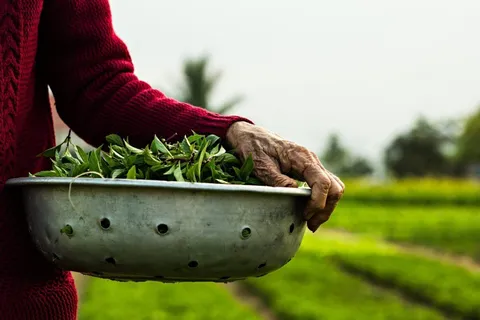Explore Hội An's Trà Quế Vegetable Village - An Organic Vegetable Village
Discover Trà Quế Vegetable Village in Hội An, an organic farming haven known for its sustainable agricultural practices and rich history...
Discover Trà Quế Vegetable Village in Hội An, an organic farming haven known for its sustainable agricultural practices and rich history. Located just 2.5 kilometers north of Hội An's center, this village offers visitors a chance to experience traditional Vietnamese farming and savor fresh, organic produce.
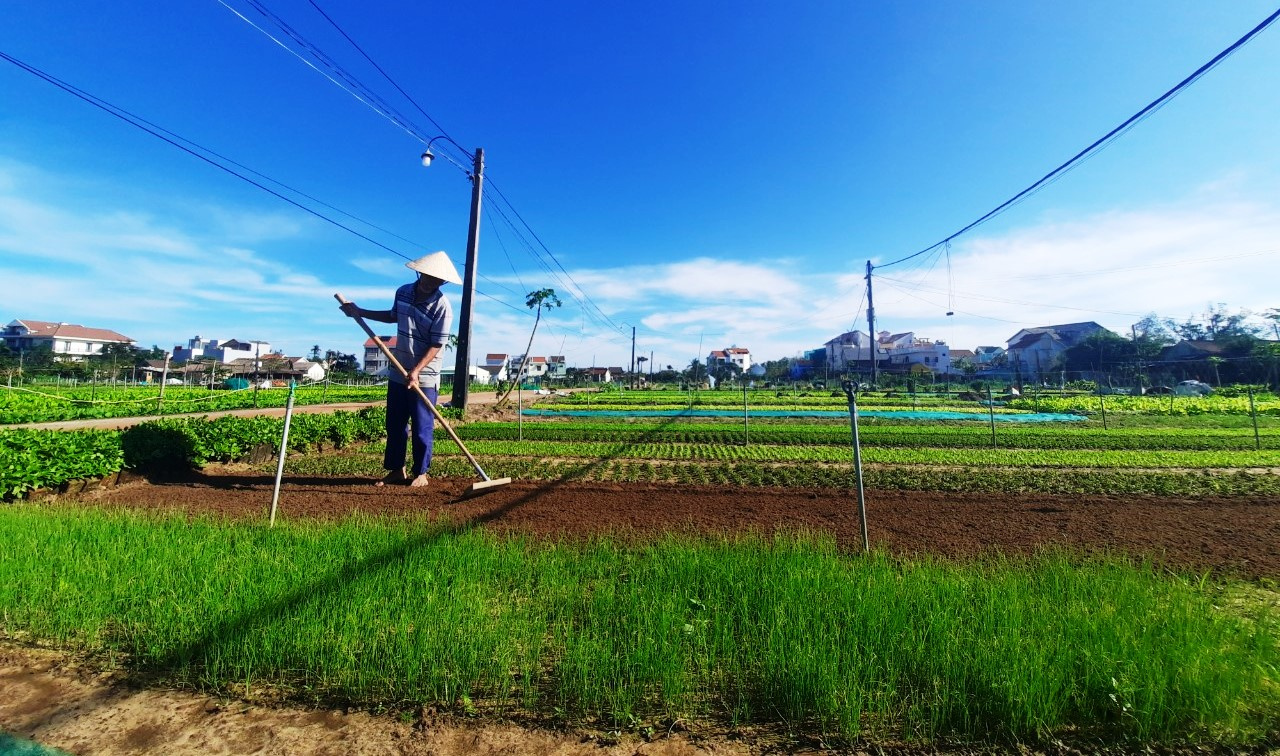
1. Introduction of Tra Que Vegetable Village Hoi An
Tra Que Vegetable Village is located in Cam Ha commune, about 2,5 kilometers from the center of Hội An to the north. Originally known as Nhu Que village, it was famous for growing aromatic herbs like basil. In the 18th century, under King Gia Long's Nguyen Dynasty, the village was renamed Tra Que after a special vegetable noted for its basil-like pungency and camellia-like aroma that intrigued the king. "Tra Que" translates to "Basil Tea" in Vietnamese.
The village continues to uphold traditional methods for cultivating organic vegetables, focusing exclusively on spices like onion, basil, perilla, and cilantro, …. The farming process here is highly meticulous, with irrigation water sourced from underground reservoirs and fertilizer derived from seaweed collected from the nearby lagoon. These practices contribute to the consistently vibrant green color of the vegetables grown in Tra Que Vegetable Village.
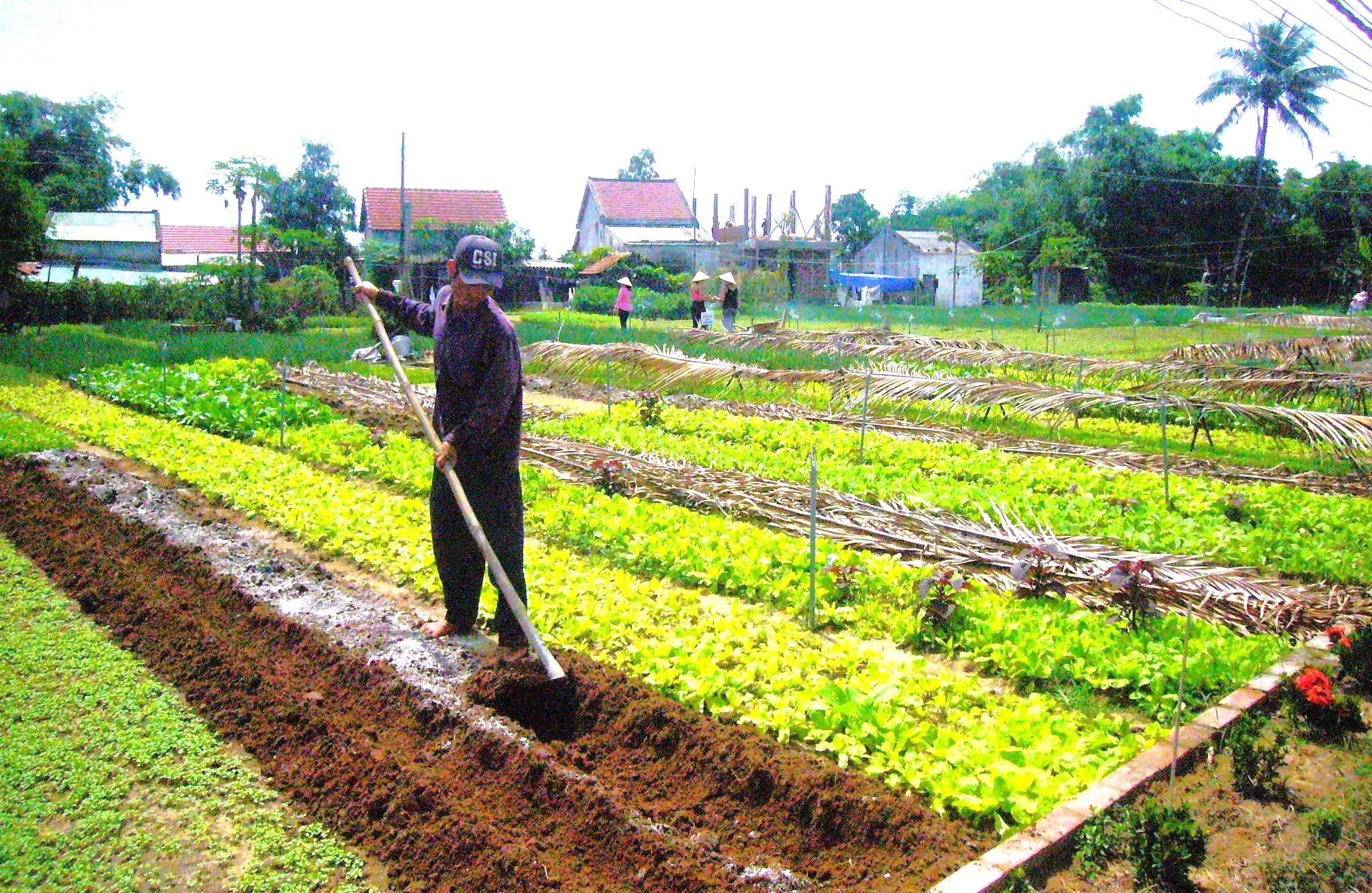
Traditional methods for cultivating organic vegetables (Image: Internet).
When you visit Trà Quế Vegetable Village, you'll be enchanted by the rustic and peaceful scenery of vast vegetable fields. You'll have the opportunity to experience the life of a farmer by engaging in activities such as hoeing the soil, fertilizing with algae, and watering plants using traditional watering buckets. Additionally, you can enjoy a refreshing basil seed drink and prepare your own rustic dishes using fresh green vegetables from Trà Quế.

Rustic dishes using fresh green vegetables from Trà Quế (Image: Internet).
The village offers a truly immersive experience, allowing you to connect with the traditional agricultural practices that have been preserved for centuries. As you engage in these activities, you'll gain a deeper appreciation for the hard work and dedication of the local farmers.
After working in the fields, you can relax and enjoy the serene surroundings, taking in the beauty of the lush, green landscape. The fresh air and tranquil environment provide a perfect escape from the hustle and bustle of city life.
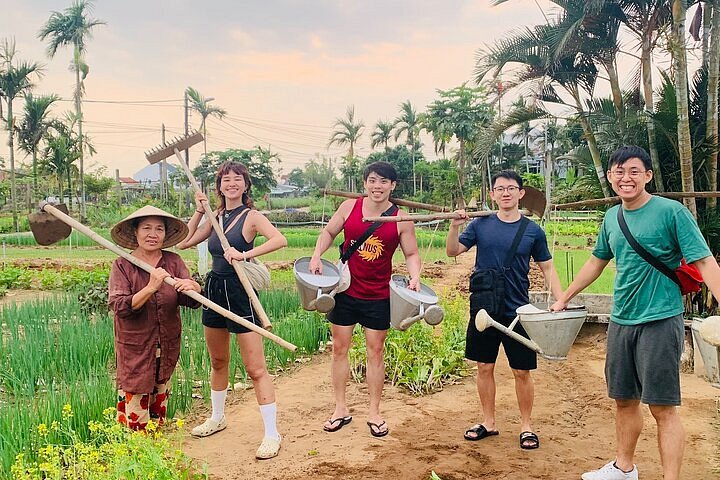
Guests enchant the rustic and peaceful scenery of vast vegetable fields (Image: Internet).
Moreover, the experience of making and enjoying dishes with fresh vegetables straight from the farm is both rewarding and delicious. You'll learn about the unique flavors that these vegetables contribute to local cuisine and how they have become integral to the culinary heritage of Hội An and Quảng Nam.
Visiting Trà Quế Vegetable Village not only offers a glimpse into traditional farming methods but also allows you to indulge in the simple pleasures of rural life, making it a memorable and enriching experience.
2. How Is Tra Que Vegetable Village Unique?
Trà Quế Vegetable Village is a remarkable agricultural community where households rotate and intercrop over 20 different types of leafy vegetables and spices. Known as the largest vegetable granary in the Quang Nam – Da Nang area, it specializes in providing fresh, clean, organic vegetables year-round. This makes it a key supplier in the region and a unique destination for tourists visiting Hội An.

There are over 20 different types of leafy vegetables and spices (Image: Internet).
With a history spanning more than 300 years, Trà Quế originally cultivated a variety of herbs, including a distinctive vegetable called Nhu Quế, known for its strong cinnamon-like scent. In the 19th century, King Gia Long visited the village and was so impressed by the flavor of the vegetables that he named the village Trà Quế. This name has been preserved and used ever since.
On April 4, 2022, Trà Quế Vegetable Village was officially recognized as a National Intangible Cultural Heritage by the Ministry of Culture, Sports, and Tourism. This recognition has bolstered its status as a fascinating tourist destination, drawing numerous visitors. The village welcomes guests every day of the week, offering a range of engaging experiential activities.
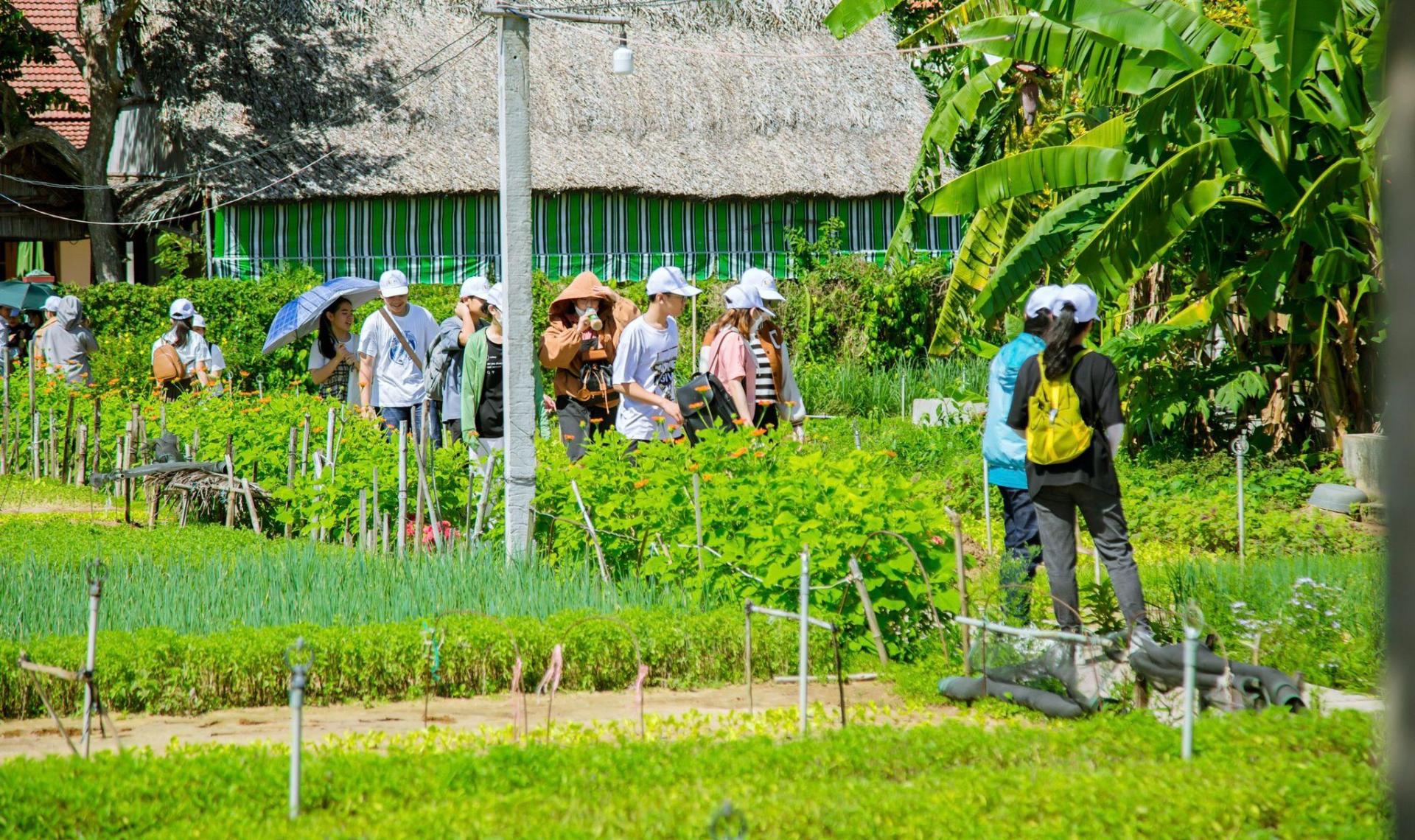
The village welcomes guests every day of the week (Image: Internet).
Visitors to Trà Quế can immerse themselves in the daily life of the village, participating in farming activities such as hoeing soil, fertilizing with algae, and watering plants. The village also provides the opportunity to enjoy a refreshing basil seed drink and prepare rustic dishes using fresh, locally grown vegetables. This blend of hands-on experiences and culinary delights makes Trà Quế an unforgettable destination for those looking to explore the rich agricultural heritage and serene beauty of Hội An.
Tra Que Vegetable Village: An Attractive Destination Worthy of National Heritage Status
Quang Nam has long been celebrated as a land of heritage, with two UNESCO World Heritage Sites: Hoi An Ancient Town and My Son Sanctuary. While Vietnam is home to many craft and vegetable villages, a unique and distinctive vegetable village like Tra Que in Hoi An is a rare find.
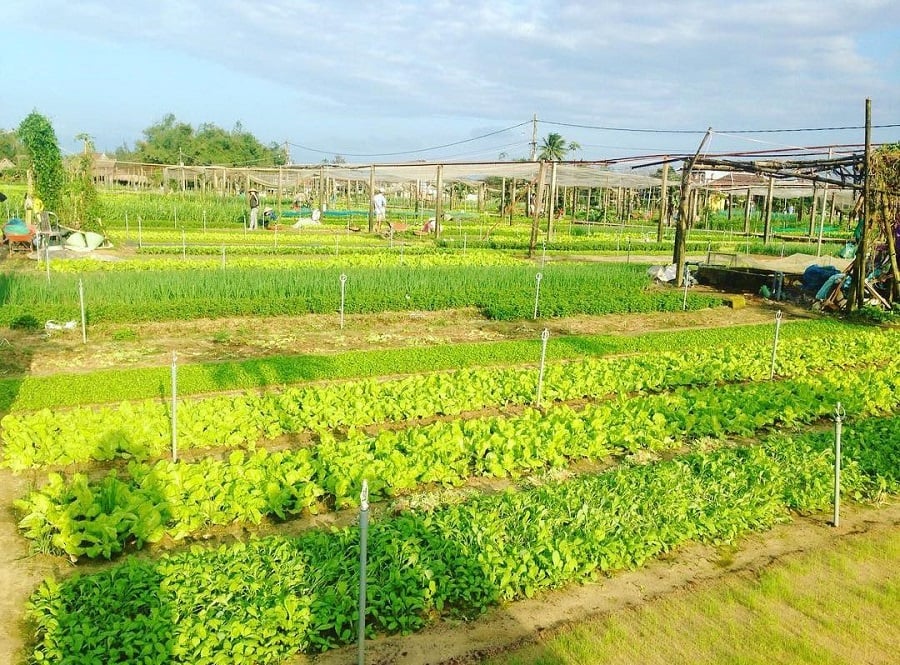
Tra Que boasts over 40 types of vegetables (Image: Internet).
Tra Que boasts over 40 types of vegetables, with herbs being the most notable. While they include familiar varieties like scallions, laksa leaves, perilla, mint, and cilantro, Tra Que vegetables are renowned for their distinctive aroma and unique flavor. Notably, a visit to Tra Que offers more than just sightseeing and observing local farming practices. Visitors can engage with the farmers to learn about planting, watering, and harvesting vegetables. Additionally, guests can cycle around the paths surrounding the village to enjoy the fresh, cheerful atmosphere of the over 18-hectare vegetable fields.
Read more about the types of vegetables grown in Tra Que Vegetable Village.
In addition to herbs, Tra Que also cultivates various leafy greens, root vegetables, and legumes. These include mustard greens, spinach, water spinach, morning glory, radishes, carrots, and beans. The unique soil and traditional farming methods contribute to the exceptional quality and taste of the produce.
Visitors to Tra Que can immerse themselves in the agricultural lifestyle by participating in hands-on activities such as preparing the soil, planting seeds, watering crops, and even harvesting vegetables. The village also offers cooking classes where guests can learn to prepare traditional Vietnamese dishes using the fresh, organic produce from the fields.
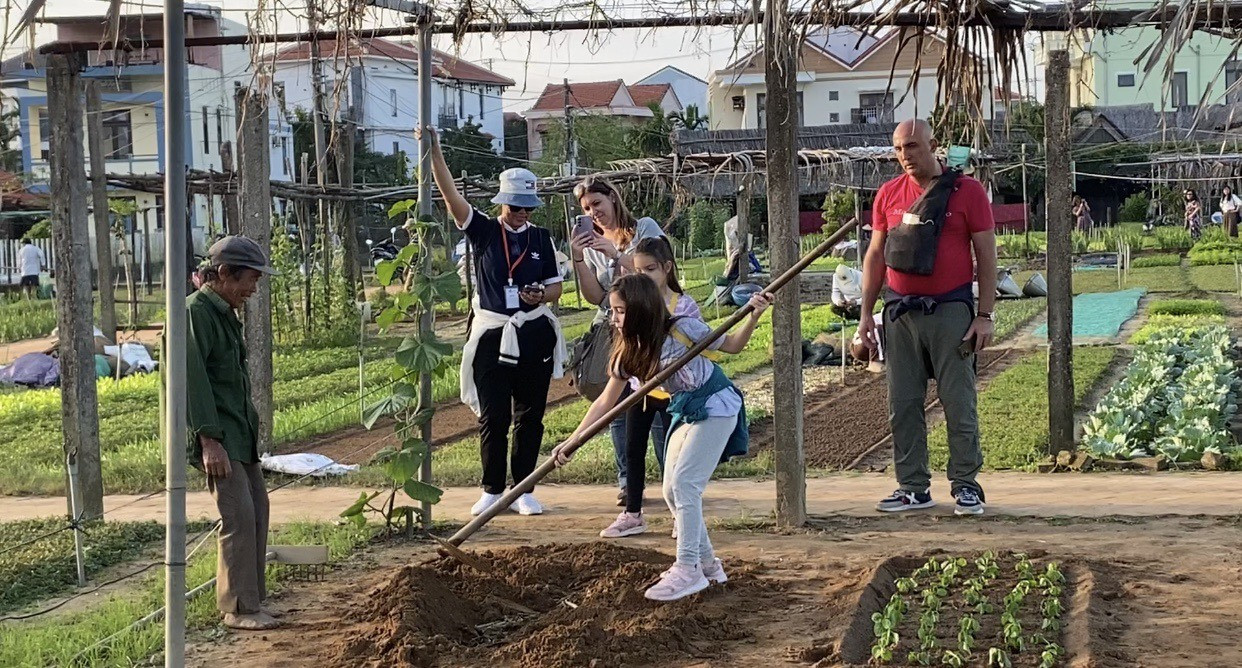
Experience becoming a farmer (Image: Internet).
Cycling through the village, guests can explore the picturesque scenery, with lush green fields stretching as far as the eye can see. The tranquil environment, combined with the warm hospitality of the local farmers, makes Tra Que a memorable and enriching experience for anyone interested in sustainable agriculture and rural Vietnamese culture.

Cycling tour through Tra Que vegetable village (Image: Internet).
On April 4, Minister of Culture, Sports and Tourism Nguyen Van Hung signed a decision to recognize Tra Que vegetable growing profession as a National Intangible Cultural Heritage: Folk knowledge, traditional crafts. Recognition of vegetable growing profession Tra Que is a national intangible cultural heritage and is considered a valuable opportunity to help spread and further enhance the craft village brand in the plan to restore Hoi An tourism in the coming time.
Thank you for watching!

